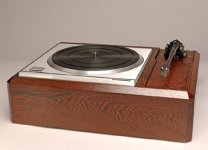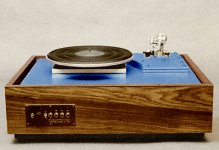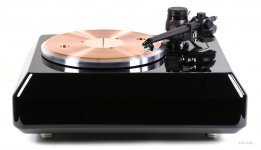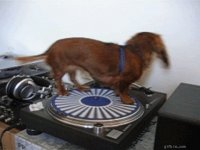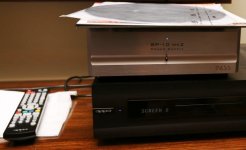Hi Brian,
Yes the gout is gone, thanks. All it took was to get back on the right diet and to remember the meds.
Yes the gout is gone, thanks. All it took was to get back on the right diet and to remember the meds.
remember the meds.
10 times the daily recommended dosage of vitamin c keeps the doctor away, 1000mg for men, up to 1500mg for blow inhalers.
(the g/f did some long term malpractice/experimentation/research* on that. *cross those inapplicable at your own judgement)
Papa's Legoland CES Porn
??????? 2014? CES and T.H.E. SHOW ???? - ?10?
Papa - what's XA160.8 ?
that thing not existing in this Universe ?
??????? 2014? CES and T.H.E. SHOW ???? - ?10?
Papa - what's XA160.8 ?
that thing not existing in this Universe ?
not existing in this Universe ?
XA160.42 sounds stupid, but the number of power devices in each model can be divided by 8.
Personally I think it's because 8 looks like a stack of boobies (and 4 times 2 also makes 8).
Papa's Legoland CES Porn
??????? 2014? CES and T.H.E. SHOW ???? - ?10?
Papa - what's XA160.8 ?
that thing not existing in this Universe ?
XA160.8 iz a XA161 minus 0.2
😀😀😀
There iz enough audio porn in those photo's to keep me happy for the next year!!!!
Attachments
Last edited:
from 6moon/news :
January 2014 - Pass - Pass Labs bow their X.8 Series amplifiers to "deliver more power with fewer stages, lower distortion and less feedback". The range consists of 5 x class A models and 4 x class A/B, four stereo and five mono amps. The 2-channel amps are the X150.8, X250.8, X350.8 and XA30.8. The monos include the X600.8, XA60.8, XA100.8, XA160.8 and XA200.8. Per-channel ratings range from 30 watts for the stereo XA30.8 to 600 watts for the mono X600.8. Pass Labs increased the amplifiers' class A operation with higher power Toshiba Mosfets and many more of them than usual. The X250.8 and XA100.8 amplifiers each use 56 output transistors whilst the X350.8, X600.8, XA160.8 and XA200.8 get 72. Improved direct-coupled front ends unique to each model boast very high stability, low distortion, low noise, 100kHz open-loop bandwidths and very high input impedances. The power supplies are also larger than they were in earlier amplifiers. The X150.8, X250.8, XA30.8, XA60.8, XA100.8, X350.8 and X600.8 have one third more storage capacitance and new CRC filtering to round out the edges of the supply ripple. The power supplies still use paralleled fast/soft rectifiers and very large toroidal Plitron transformers but the AC primary circuits now incorporate additional RF filtering. The front-end circuits boast massively larger power supply decoupling and low-noise shunt regulators. Output noise was lowered by more than 10dB and the new amplifiers are much more resistant to variations in the AC power line." Pricing begins at $6'500 for the smallest XA30.8 in the 'high current' range and $6'400 for the X150.8 in the 'high voltage' series. The XA200.8 tops out at $40'000/pr for the XA.8 models whilst the X600.8 at $26'000/pr does the honors for the X.8 versions.
Pricing begins at 6'500
It's OK, I would also prefer to pay with 6 feet and 500 something (inches).
Your link, ZM, shows tasteful cases and heatsinks and with your experience of Papa's work, you just KNOW that they are good..........I've nothing against 'brand loyalty' by the way,
But some of the speakers really do look gross....have to admit that the Wilson Sashas look as though a real designer attended - to the outside at least.
But what turned me on was the (nearly) all singing SP-10 (or 15?) TT. [Brand loyalty I suppose!🙂] But I can never understand why modifiers of these do not take the electronics outboard - doing away with that awful top-plate - and mount the motor alone in a decent plinth. That elderly Japanese guy (Kinyata?) did this many moons ago.....and I am doing the same having ousted the electronics to outboard some 12 years or more ago.😉
[Vantage Audio have my motor + PS for service and repair and I hope to have it back soon - they are excellent but they are very slow!😡😡]
But some of the speakers really do look gross....have to admit that the Wilson Sashas look as though a real designer attended - to the outside at least.
But what turned me on was the (nearly) all singing SP-10 (or 15?) TT. [Brand loyalty I suppose!🙂] But I can never understand why modifiers of these do not take the electronics outboard - doing away with that awful top-plate - and mount the motor alone in a decent plinth. That elderly Japanese guy (Kinyata?) did this many moons ago.....and I am doing the same having ousted the electronics to outboard some 12 years or more ago.😉
[Vantage Audio have my motor + PS for service and repair and I hope to have it back soon - they are excellent but they are very slow!😡😡]
mount the motor alone in a decent plinth.
Isnt it direct driven? How does one mount a direct mounted motor on separat plinth?
Yes...DD. The DD motor unit is mounted to the top-plate which you see on any normal SP-10.
The pic for the PAss display showed what I Believe is on of Mr Porter's treated plinths. The other approach is similar to Mitch Cotter's approach as shown in the second pic. His was very utilitarian with little desire to 'make it look good'; it was also suspended.
Take Cotter's idea and sink the motor down within the plinth and you get a better looking design.
The electronics are normally contained within the underside of the top-plate whereas I have mine in a separate cabinet linked by a multicore cable. Other than the motor there are no electronics within the plinth.
EDIT:
Looking at the cotter pic it seems from the various switches at the front that he has kept the electronics inside the plinth. Also, the raw power supply was always in a separate off-plinth case. What I have in mind is more like Pic 3
The pic for the PAss display showed what I Believe is on of Mr Porter's treated plinths. The other approach is similar to Mitch Cotter's approach as shown in the second pic. His was very utilitarian with little desire to 'make it look good'; it was also suspended.
Take Cotter's idea and sink the motor down within the plinth and you get a better looking design.
The electronics are normally contained within the underside of the top-plate whereas I have mine in a separate cabinet linked by a multicore cable. Other than the motor there are no electronics within the plinth.
EDIT:
Looking at the cotter pic it seems from the various switches at the front that he has kept the electronics inside the plinth. Also, the raw power supply was always in a separate off-plinth case. What I have in mind is more like Pic 3
Attachments
Last edited:
Yes...DD. The DD motor unit is mounted to the top-plate which you see on any normal SP-10.
What I have in mind is more like Pic 3
How about Direct Dachshund powered TT? 😀😀😀
(i.e. good morning everyone)
Attachments
The pic for the PASS display showed
http://my-hiend.com/leoyeh2/2013a/IMG_7766ss.jpg
Looks more like the works of an in-house TT hobbyist
Attachments
Last edited:
http://my-hiend.com/leoyeh2/2013a/IMG_7766ss.jpg
Looks more like the works of an in-house TT hobbyist
Looks like it's being used as a CD holder - with yet another remote control for the collection......

Attachments
...and I like that PS too!
[I guess that Papa is using the SP-10 to be a somewhat contemporary TT with the V-FET amps.]
[I guess that Papa is using the SP-10 to be a somewhat contemporary TT with the V-FET amps.]
Last edited:
1000mg for men
Funny how a daily gram of C has such a different meaning at this age.
- Home
- Amplifiers
- Pass Labs
- The Pass Pub: The High-End Off Topic Thread




